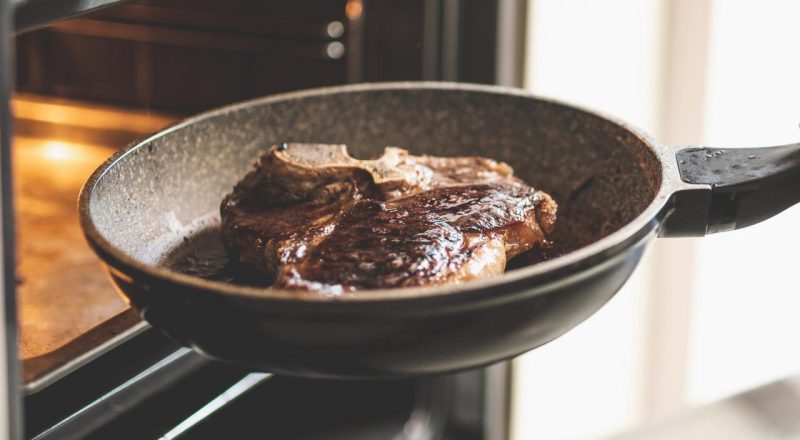Introduction:
Reheating steak in the microwave can be a convenient way to enjoy leftovers, but it requires careful techniques to maintain the meat’s flavor, tenderness, and juiciness. This comprehensive guide provides detailed steps and tips for reheating steak using a microwave, ensuring your meal remains as tasty as it was when first cooked. By following these guidelines, you can avoid common pitfalls like overcooking or drying out your steak.
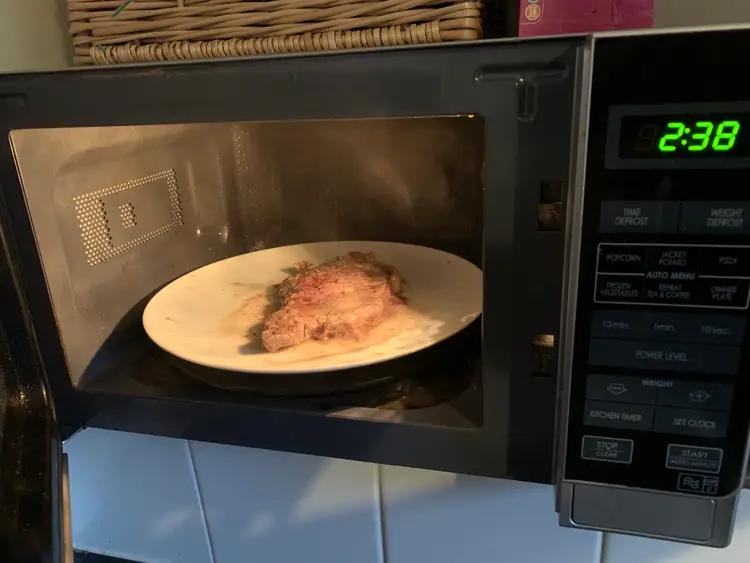
How to Reheat Steak in a Microwave:
What Are the Best Techniques for Preserving Flavor and Texture?
Preparation:
How Should You Prepare Your Steak for Reheating?
Proper preparation ensures your steak reheats evenly and retains its original quality.
Bring to Room Temperature:
Equal Heating:
Out of the Fridge: Take the steak out of the refrigerator and let it sit at room temperature for about 20-30 minutes. This step helps to reduce the cooking time in the microwave and ensures more even reheating.
Avoiding Cold Centers: Allowing the steak to warm up slightly prevents cold spots in the center, which can be common when reheating meat directly from the fridge.
Slicing the Steak:
Enhanced Uniformity:
Portion the Steak: If your steak is thick, consider slicing it into portions. Thinner pieces heat more evenly and quickly, reducing the risk of the outer parts becoming overcooked while the center remains cold.
Uniform Pieces: Cutting the steak into uniformly sized pieces helps ensure each piece heats at the same rate, improving the overall reheating result.
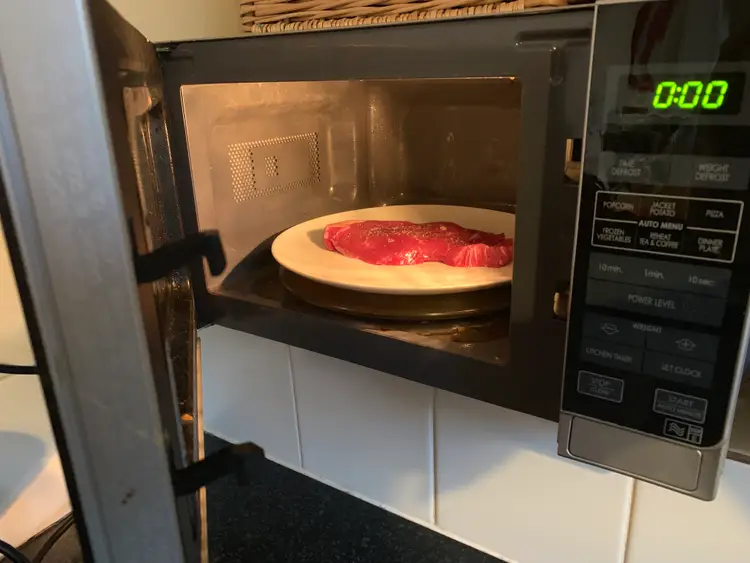 Moistening the Steak:
Moistening the Steak:
Preventing Dryness:
Add Moisture: Brush the steak lightly with olive oil, broth, or a small amount of water to help retain moisture during the reheating process. This prevents the steak from drying out and becoming tough.
Sealing in Juices: Cover the steak with a microwave-safe lid or microwave-safe plastic wrap to create a steaming effect. This helps to keep the steak moist and flavorful.
Microwave Settings:
What Are the Ideal Settings for Reheating Steak?
Using the right microwave settings is crucial for reheating steak without compromising its quality.
Low Power Setting:
Gentle Heating:
Power Level: Set your microwave to a low or medium power setting (around 50% power). Gentle heating reduces the risk of overcooking the steak and maintains its tenderness.
Avoid High Heat: High power settings can cause the steak to become tough and rubbery. Slow and gentle reheating ensures better texture retention.
Time Intervals:
Controlled Heating:
Short Bursts: Reheat the steak in short intervals to avoid overcooking. Start with 30-second bursts, checking the steak’s temperature and texture after each interval.
Monitor Temperature: Continue microwaving in 30-second increments until the steak is heated through. This gradual approach helps evenly distribute heat and retain moisture.
Microwave Techniques:
What Are the Best Techniques for Reheating Steak in a Microwave?
Different techniques can optimize the reheating process, preserving the steak’s flavor and texture.
Microwave-Safe Dish:
Even Heating Surface:
Use the Right Dish: Place the steak on a microwave-safe plate or dish. Avoid using plastic containers that are not labeled microwave safe, as they can release harmful chemicals when heated.
Single Layer: Arrange the steak in a single layer on the dish. Crowding the plate can lead to uneven heating.
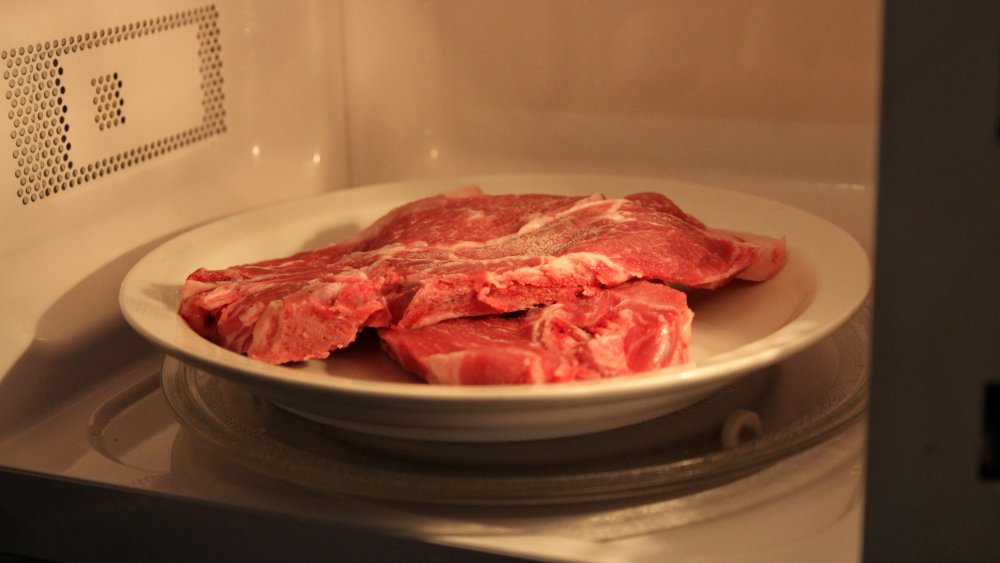 Covering the Steak:
Covering the Steak:
Retaining Moisture:
Damp Paper Towel: Cover the steak with a damp paper towel to help retain moisture during reheating. The damp towel creates steam, which keeps the steak juicy and prevents it from drying out.
Microwave-Safe Lid: Alternatively, use a microwave-safe lid or microwave-safe plastic wrap with small holes punched for ventilation. This method traps steam and enhances the reheating process.
Steam Effect:
Simulating Reheating Environment:
Create Steam: Place a small microwave-safe cup of water in the microwave along with the steak. The steam generated helps keep the steak moist and prevents it from becoming tough.
Enhanced Results: This technique simulates a more gentle reheating environment, making the steak taste as close to freshly cooked as possible.
Finish and Rest:
How Do You Complete the Reheating Process and Serve the Steak?
Finishing touches and resting the steak are essential for enjoying a perfectly reheated meal.
Check Temperature:
Ensuring Doneness:
Target Temperature: Use a meat thermometer to check the internal temperature of the steak. Aim for around 110-130°F (43-54°C) depending on your desired level of doneness (rare to medium).
Avoid Overheating: Be careful not to overheat the steak. The reheating process should be stopped once the steak reaches the desired temperature to avoid further cooking.
Resting the Steak:
Redistributing Juices:
Let It Rest: Allow the steak to rest for a few minutes after reheating. Resting helps redistribute the juices throughout the steak, maintaining its flavor and tenderness.
Covered Rest: Cover the steak loosely with foil during resting to keep it warm while the juices redistribute.
Serving Suggestions:
Enhancing the Experience:
Season as Needed: After reheating, you may want to add a touch of seasoning to the steak, such as a sprinkle of salt, pepper, or your favorite steak seasoning blend.
Pairing: Serve the reheated steak with sides like roasted vegetables, mashed potatoes, or a fresh salad to complete the meal. These accompaniments complement the steak and enhance the dining experience.
Storage and Safety:
What Are the Best Practices for Storing Leftover Steak for Reheating?
Proper storage practices ensure your leftover steak maintains its quality until it’s time to reheat.
Refrigeration:
Short-Term Storage:
Cool Quickly: Store leftover steak in the refrigerator as soon as possible to prevent bacterial growth. Place it in a shallow, airtight container to cool quickly and maintain freshness.
Label and Date: Label the container with the storage date to track how long the steak has been refrigerated. Consume refrigerated steak within 3-4 days for optimal quality and safety.
 Freezing:
Freezing:
Long-Term Storage:
Wrap and Freeze: For longer storage, wrap the steak tightly in plastic wrap or aluminum foil, then place it in a freezer-safe bag or container. Removing air from the bag helps prevent freezer burn.
Freezing Time: Frozen steak can be stored for up to 2-3 months. Thaw it in the refrigerator overnight before reheating to ensure even defrosting and quality.
Food Safety:
Avoiding Contamination:
Proper Handling: Always handle leftover steak with clean hands and utensils to prevent contamination. Use separate cutting boards for raw meats and other foods to avoid cross-contamination.
Reheat Once: Reheat leftover steak only once. Repeated reheating can degrade its texture and increase the risk of bacterial growth. Only reheat the portion you plan to consume.
Alternatives to Microwaving:
What Other Methods Can You Use to Reheat Steak?
Exploring alternative reheating methods can provide options to suit different preferences and available equipment.
Oven Reheating:
Gentle and Even Heating:
Preheat the Oven: Preheat your oven to 250°F (120°C). Place the steak on a wire rack set over a baking sheet to allow air circulation and even heating.
Bake and Check: Heat the steak in the oven for about 20-30 minutes, checking frequently with a meat thermometer until it reaches the desired internal temperature. This method provides gentle reheating with minimal moisture loss.
Skillet Reheating:
Quick and Effective:
Heat the Skillet: Preheat a skillet over medium-low heat. Add a small amount of oil or butter to the skillet to prevent sticking and add flavor.
Sear the Steak: Place the steak in the skillet and heat it for about 2-3 minutes on each side, until warmed through. Searing not only reheats the steak but also enhances its crust.
Sous Vide Reheating:
Precise Temperature Control:
Set Up Sous Vide: Set up a sous vide machine to the desired temperature for reheating (around 130°F or 54°C for medium-rare). Place the steak in a vacuum-sealed bag or a ziplock bag using the water displacement method.
Sous Vide Bath: Submerge the steak in the sous vide bath for 1-2 hours. This method ensures precise temperature control and prevents overcooking, maintaining the steak’s original quality.
Comparing Methods:
How Do Different Reheating Methods Impact Steak Quality?
Understanding the pros and cons of each reheating method helps you choose the best approach based on your equipment and preferences.
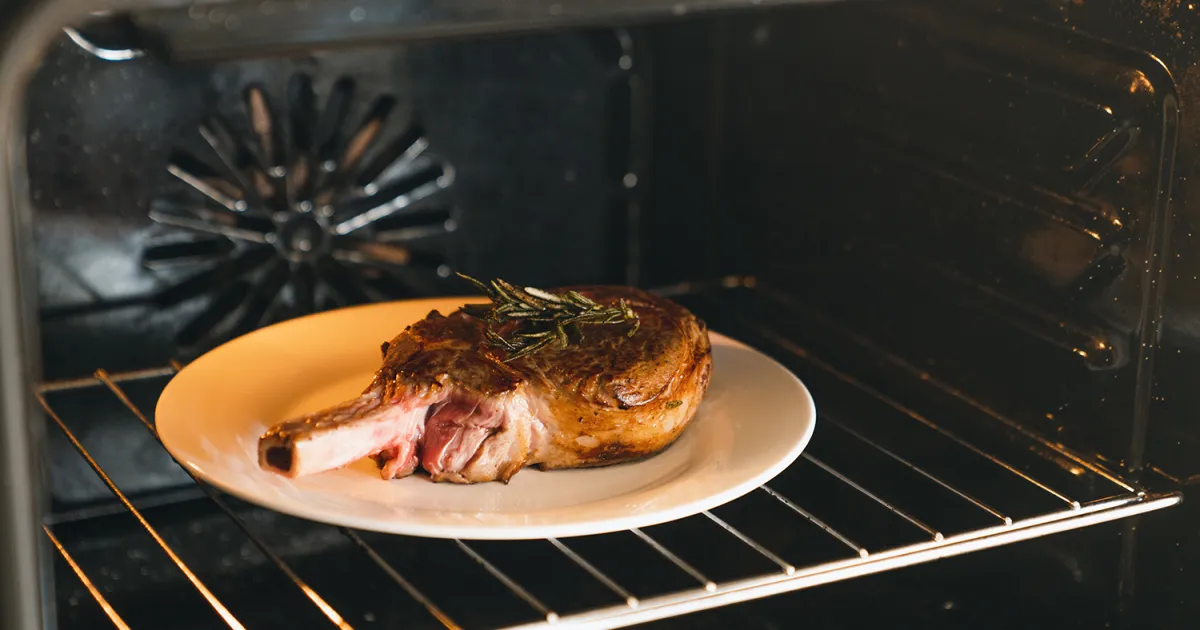 Microwave Method:
Microwave Method:
Pros and Cons:
Quick and Convenient: The microwave method is fast and convenient, making it ideal for quick meals. However, using low power and short bursts is crucial to avoid overcooking and drying out the steak.
Maintains Moisture: With proper techniques, such as covering the steak and adding moisture, the microwave can effectively maintain the steak’s tenderness and juiciness.
Oven Method:
Balanced Reheating:
Even Heating: The oven method offers gentle and even reheating, preserving the steak’s texture and flavor. It’s a reliable option for those with extra time.
Longer Time: However, it takes longer than microwaving, making it less suitable for quick meals.
Skillet Method:
Enhanced Flavor:
Quick and Tasty: The skillet method is relatively quick and adds a delicious sear to the steak, enhancing its flavor. It’s ideal for those who enjoy a crispy exterior.
Attention Required: It requires more attention to avoid burning or overcooking the steak. Proper heat control is essential.
Sous Vide Method:
Perfect Control:
Consistent Quality: The sous vide method offers precise temperature control, ensuring consistent reheating without overcooking. It maintains the steak’s quality exceptionally well.
Special Equipment: This method requires special equipment and more time, making it less convenient for quick reheating but excellent for quality retention.
Conclusion
Reheating steak in a microwave can be done effectively with the right techniques, preserving its flavor, tenderness, and juiciness. Proper preparation, such as bringing the steak to room temperature, slicing into portions, and adding moisture, sets the stage for successful reheating. Using a low power setting and reheating in short intervals ensures the steak warms evenly without overcooking. Techniques like covering the steak with a damp paper towel or using steam help retain moisture. Finishing touches, including checking temperature and allowing the steak to rest, enhance the final result.
Proper storage practices, such as refrigeration and freezing, maintain the quality of leftover steak until reheating. Exploring alternative methods like oven, skillet, or sous vide reheating provides options suited to different preferences and available equipment. Comparing methods helps you select the best approach based on your desired quality and time constraints. By following these detailed guidelines, you can enjoy a perfectly reheated steak that tastes as delicious as when first cooked.

